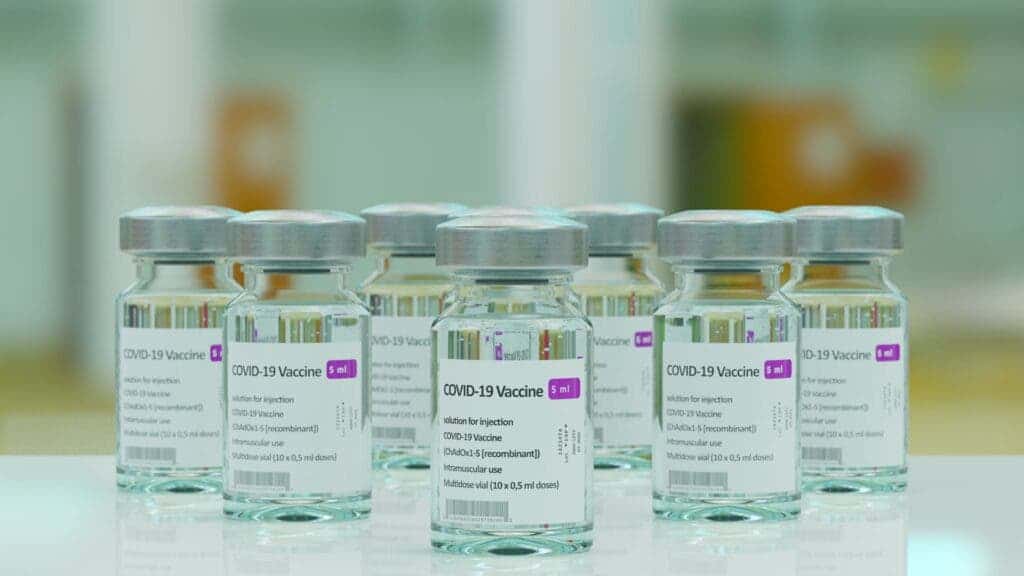Whether you’re a species in a small ecosystem or the planetary dominant species, diseases are always your enemy. Throughout its history, mankind hasn’t been spared of diseases. Whether it’s things like the common cold or various deadly diseases like influenza, typhoid, or polio, we’re always at risk from pathogens.
Sometimes, outbreaks can be devastating, like the infamous Spanish flu thatkilled 50 million people between 1918 and 1920 or smallpox virus, which caused more than300 million deaths across the globe — more than thrice the combined deaths caused by World War I and II.
For the longest time, we’ve been largely reactive on this front: you get a disease, you try a treatment. But in recent times, we’ve become proactive. We’re understanding more and more what causes diseases and how to limit their spread — and more importantly, we’ve developed ways to prevent diseases from affecting us. I’m talking, of course, about vaccines.

It has been more than 200 years since the first vaccine discovery, and it’s hard to even imagine the number of lives that vaccines have saved so far. In fact, according to one calculation, 10 vaccines alone saved 36 million children in the past two decades. Expanding that calculation to the entire population, you end up with a truly resounding success of vaccines. In fact, COVID-19 vaccines alone saved some 20 million lives (and counting).
With the ongoing pandemic, we’ve once again been reminded of the importance of vaccination for the continuation of humanity on Earth. So how did humans come up with the revolutionary idea of developing vaccines in the first place, and what are some of the greatest vaccines developed so far?
The origins of vaccination
Varied forms of immunity building and disease prevention have been in practice for centuries; for example, in 17th century China, skin tears with cowpox were smeared onto healthy individuals to induce immunity against cowpox, while, Buddhist monks used to consume snake venom for developing immunity against snake bites.

In the early 1800s, another unconventional method called variolation was introduced (although in Wales, some inoculation had been reported 100 years earlier). Matter from smallpox pimples or pustules was extracted and then applied to the skin cuts of an uninfected person.
Practitioners of this method used to claim that this technique results in a milder form of infection in the subject than the natural mode of transmission of the virus and makes the person immune against further infection.
Although such unconventional methods of protection against the deadly disease were prevalent, the world had to wait until 1796, when Edward Jenner, a British physician, and scientist pioneered the first-ever official vaccination attempt by inoculating an eight-year-old boy named James Phipps with the cowpox virus, thus successfully demonstrating immunity to smallpox. This experiment led to the development of the world’s first vaccine in 1798 — the smallpox vaccine.
A quick and simple guide to how vaccines work
Vaccines train your immune system to create antibodies by introducing killed or weakened forms of germs like viruses or bacteria. The basic working mechanism of a vaccine can be understood via a simple 5-step process.
- Step 1: A vaccine shot containing a deactivated or mild form of the desired virus or bacteria is injected or given orally (or in more modern forms, it can also be puffed into the nose).
- Step 2: Immune system recognizes the invading foreign bodies and starts producing antibodies.
- Step 3: The immune system produces the necessary ‘soldiers’ to fight off the disease.
- Step 4: Immune system develops a memory of the condition and if it encounters it again, knows what to do and can protect you.
Our immune system remembers infections and its response to them. Thus, vaccines are a safe and clever way to produce an effective immune response in the body without causing illness. This is also why when exposed to one or more doses of a vaccine, we often remain protected against a disease for years, decades, or even a lifetime.
The greatest vaccines of all time
Here is a list of some of the most important vaccines discovered so far:

Smallpox vaccine
The Smallpox disease caused by the variola virus was considered among the most dangerous diseases that haunted humanity for more than 3000 years. It caused hundreds of millions of deaths and had a fatality rate of more than 30%. The disease came under control when Edward Jenner developed a vaccine after observing that people previously infected with cowpox stay unaffected by smallpox.
Inspired by the variolation method, Edward Jenner created the smallpox vaccine in 1798 that proved to be highly successful. The vaccine eradicated smallpox from the world by 1980 and paved the way for further advancement in the field of immunology and virology. The smallpox vaccine showed that by finding a permanent cure for many other pandemics, humans could fight against several other evil microbes threatening their existence.
Polio vaccine
The polio vaccine development was one of the major medical breakthroughs of the 20th century. Since 1988, the vaccine has saved more than 10 million people from paralysis and prevented more than 650,000 deaths. The live attenuated (weakened) oral polio vaccine (OPV) was produced in 1961 by Dr. Albert Sabin, a Polish-American medical researcher.
The poliovirus generally infected children below the age of 5 years, and in severe cases, the disease even made children permanently disabled. Individuals infected with the virus experienced paresthesia (a feeling of pin-pricks in the legs), meningitis (infection of the spinal cord/brain), and partial or complete paralysis in the arms and legs. Fortunately, OPV has eliminated poliovirus from most parts of the world and, at present, polio cases are reported only in Pakistan and Afghanistan.
Tetanus vaccine
Tetanus, commonly known as “lockjaw” is a bacterial disease in which the most commonly observed symptom is stiffening of the neck and jaw muscle while causing involuntary contractions. The infection results from exposure to the bacterium, Clostridium tetani, which releases two deadly toxins named tetanolysin and tetanospasmin. Tetanus bacterium can be found in soil, manure, dust, and on the surface of rusted metal objects.
The tetanus vaccine DTaP protects against diphtheria, tetanus, and pertussis (whooping cough). Although the tetanus vaccine shots do not provide lifetime immunity, one needs to take booster shots to stay protected. Each year, an estimated 213 000 – 293 000 deaths happen globally due to tetanus infection. However, in some countries like the UK, where the vaccine is easily accessible, tetanus is categorized among rare diseases.
COVID-19 vaccines
Prior to the outbreak of COVID-19 in late 2019, a great amount of work had been done in the field of viral vector technology and mRNA that provided us with large amounts of data on the structure, genome, and life cycle of RNA viruses (like the coronaviruses). Therefore, when it came to developing the COVID vaccines, scientists and vaccine producers didn’t have to start from scratch and they were able to come up with vaccines within one year of the outbreak.
Viral vector has been in use since the 1970s and previously led to the development of vaccines for Ebola, HIV, Zika, etc. For coronavirus also, there are several mRNA and viral vector vaccines available on the market today such as the Pfizer-BioNTech, Moderna, Johnson & Johnson’s, Janssen, and Bharat Biotech’s Covaxin.
Hepatitis B vaccine
Hepatitis B virus (HBV) has infected more than two billion people worldwide, and it stands as one of the major causes of hepatocellular carcinoma (HCC or liver cancer) in humans. According to an estimate from the Hepatitis B Foundation, about 820,000 people lose their lives every year due to HBV infection. The vaccine against this deadly disease was developed in 1969 by an American physician, Dr. Baruch Blumberg, four years after discovering HBV in 1965.
For his valuable contribution in the field of virology, Dr. Baruch also received the 1976 Nobel Prize in Medicine.
Flu (Influenza) vaccine
Flu or Influenza is a respiratory disease caused by the influenza virus that targets the nose, throat, and lungs. Young children and older people with comorbidities are at a higher risk of getting infected with flu and they may face severe complications in the form of breathing-related problems such as asthma. A patient might die due to influenza if he or she didn’t receive timely treatment, even if he or she is vaccinated.
American virologist Dr. Jonas Salk developed the first flu vaccine in 1945 but the virus genome keeps mutating to new variants due to the presence of eight RNA strands, so the flu vaccine formula is also updated every year to keep up with the new strains. The disease has caused more than six pandemics (including the Swine flu and Spanish flu) in the last 150 years. In order to restrict the virus, scientists in different parts of the world are also trying to prepare a universal flu vaccine that could end the need of developing and administering new shots every year.
The Spanish Flu infected about 500 million people and led to 50 million deaths in the initial years of its spread.
Measles, Mumps, Rubella (MMR) vaccine
Mumps is notorious for causing puffed-up cheeks and a swollen jaw that results from the swelling of salivary glands. The disease is caused by the paramyxovirus, a group of RNA viruses responsible for causing acute respiratory infections. The mumps virus is primarily transmitted via air droplets or direct contact with an infected individual.
Vaccines for Mumps are available as a monovalent vaccine, a bivalent measles-mumps variant, and a trivalent MMR vaccine, which protects against measles, mumps, and rubella. The monovalent vaccine enhances immunological activity against a single antigen or a single disease, the bivalent vaccine provides protection against two conditions, and the trivalent offers immunity against three variants. Measles can be prevented by taking the MMR vaccine. Two doses of the vaccine are effective up to 97% in preventing the disease.
Vaccines ensure a world with better health and elevated life quality. They are proof that medical science is essential for the survival of the human race. Even at present, as we fight the COVID-19 pandemic, vaccines stand as humanity’s greatest defense system.






